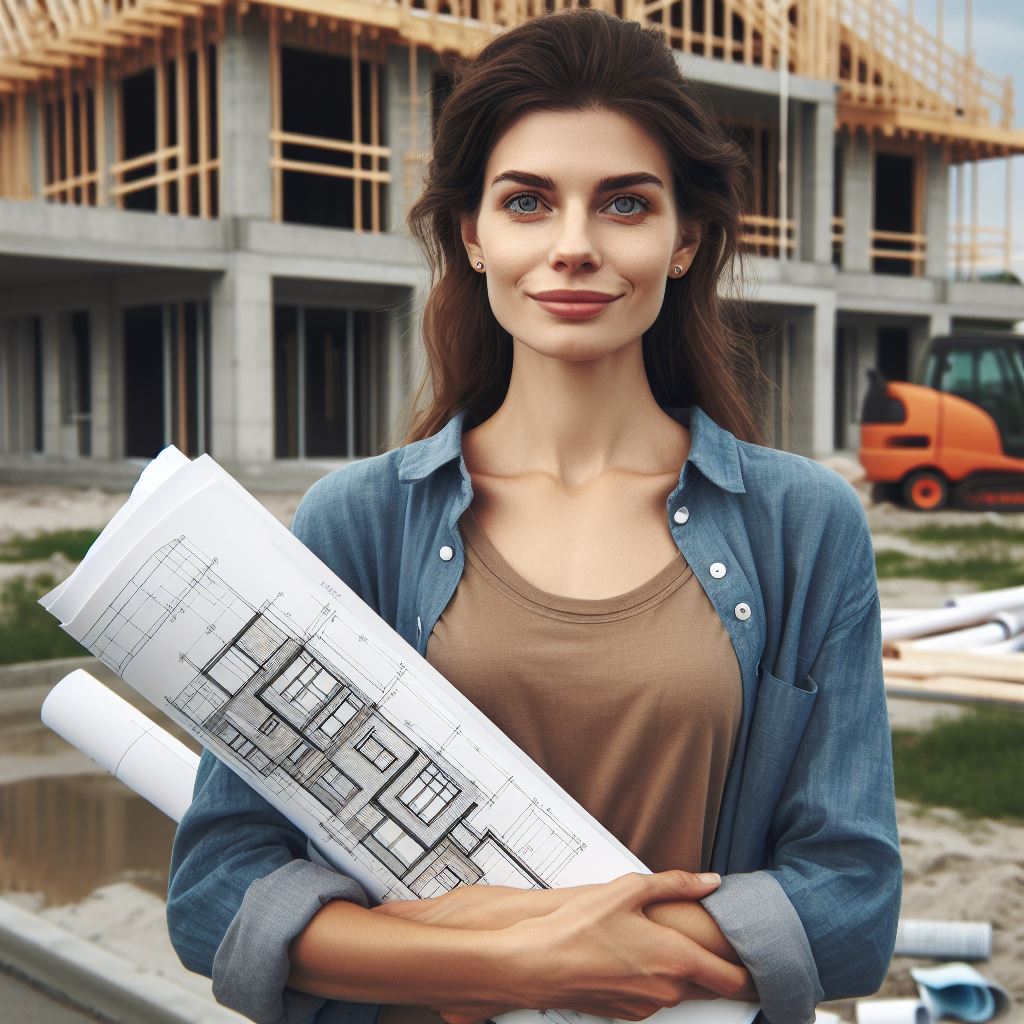Introduction
Building codes play a crucial role in ensuring the safety and functionality of structures.
They provide guidelines for construction, maintenance, and energy efficiency.
This blog post aims to provide a comprehensive guide on building codes, highlighting their significance and explaining various aspects.
Building codes are sets of regulations that govern the design, construction, and maintenance of buildings.
They encompass aspects such as structural integrity, fire safety, electrical systems, plumbing, and accessibility.
Building codes serve multiple purposes, including safeguarding public health and safety, protecting property, and promoting sustainable development.
They ensure that buildings are constructed to withstand natural disasters and meet minimum standards.
These codes are developed by government agencies and are periodically updated to adapt to changing technologies and standards.
Compliance with building codes is necessary for obtaining permits, ensuring insurance coverage, and avoiding legal complications.
Understanding building codes is essential for architects, engineers, contractors, and homeowners.
It helps them navigate the complexities of construction projects and ensures that buildings are constructed in a safe and compliant manner.
In the upcoming sections, we will delve deeper into the specifics of building codes, exploring different categories and requirements.
This comprehensive guide aims to provide valuable insights and practical information for anyone involved in the construction industry.
Stay tuned for a detailed exploration of building codes in the following chapters.
Understanding Building Codes
Definition and Purpose
Building codes are a set of regulations and standards that govern the design, construction, and maintenance of buildings.
The purpose of building codes is to ensure the safety, health, and welfare of occupants and the general public.
These codes provide guidelines for architects, engineers, builders, and contractors to follow during the construction process.
By adhering to these codes, it helps to prevent accidents, minimize damage during emergencies, and promote sustainable building practices.
Brief History of Building Codes in the US
Building codes have a long history in the United States, dating back to the early 20th century.
The need for regulations became evident after several major disasters, such as the Great Chicago Fire of 1871 and the San Francisco earthquake of 1906.
In response to these events, cities and states started implementing their own building codes to improve safety standards.
However, it wasn’t until the 1970s that a unified model code, known as the International Building Code (IBC), was developed.
The IBC is now widely adopted across the country.
Key Stakeholders Involved in Developing and Enforcing Codes
Developing and enforcing building codes is a collaborative effort involving various stakeholders.
These include government agencies, code officials, professional associations, and industry organizations.
Government agencies, such as the Department of Housing and Urban Development (HUD) at the federal level and the Department of Buildings at the local level, play a vital role in establishing and maintaining building codes.
They set the minimum standards and ensure compliance.
Code officials, often employed by local jurisdictions, are responsible for reviewing building plans, conducting inspections, and issuing permits.
They enforce the codes and ensure that buildings meet the necessary requirements.
Professional associations, such as the International Code Council (ICC), contribute to the development and maintenance of building codes.
They bring together experts from various disciplines to create and revise the codes based on industry advancements and best practices.
Industry organizations, such as the National Association of Home Builders (NAHB), also have a role in shaping building codes.
They advocate for the interests of builders and contractors, ensuring that the codes are both practical and effective.
In essence, building codes play a crucial role in ensuring the safety and quality of our built environment.
By understanding these codes and their history, as well as the key stakeholders involved, we can appreciate the importance of adhering to these regulations to protect lives and property.
Read: Handling Construction Delays Legally
Types of Building Codes
In order to ensure the safety and functionality of buildings, various types of building codes have been established.
These codes provide guidelines and regulations that dictate how buildings should be designed, constructed, and maintained.
In this section, we will explore some of the most common types of building codes.
International Building Code (IBC)
The International Building Code (IBC) is widely recognized as one of the most important building codes in the world.
It provides comprehensive regulations for both commercial and residential buildings.
The IBC covers a wide range of aspects, including construction materials, structural design, fire safety, and occupancy classifications.
National Electrical Code (NEC)
The National Electrical Code (NEC) focuses specifically on electrical installations in buildings.
It sets forth standards for the safe installation and use of electrical systems, including wiring, lighting, and appliances.
The NEC aims to prevent electrical hazards and ensure the proper functioning of electrical systems.
International Plumbing Code (IPC)
The International Plumbing Code (IPC) is dedicated to regulating plumbing systems within buildings.
It covers various aspects, such as water supply and distribution, drainage, wastewater treatment, and venting.
The IPC ensures that buildings have safe and efficient plumbing systems.
International Energy Conservation Code (IECC)
The International Energy Conservation Code (IECC) focuses on energy efficiency in buildings.
It sets minimum requirements for the insulation, heating, cooling, lighting, and ventilation systems of buildings.
The IECC aims to reduce energy consumption and promote environmental sustainability.
Accessibility Codes and Standards (ADA)
Accessibility codes and standards, most notably the Americans with Disabilities Act (ADA), mandate that buildings must be designed and constructed to be accessible to individuals with disabilities.
These codes cover elements such as ramps, doorways, elevators, and parking spaces, ensuring equal access for all.
Local Building Codes
In addition to the aforementioned codes, local building codes are enforced by individual municipalities or counties.
These codes may vary from one jurisdiction to another but generally cover similar areas as the international and national codes.
Local building codes address specific regional concerns and may include additional regulations.
In fact, building codes play a crucial role in ensuring that buildings are safe, functional, and comply with relevant regulations.
The International Building Code, National Electrical Code, International Plumbing Code, International Energy Conservation Code, Accessibility Codes and Standards, and Local Building Codes collectively contribute to the comprehensive framework that governs building construction.
Read: Real Estate Co-Ownership: Conflict Management
Role of Building Codes in Construction
Ensuring Safety and Structural Integrity
Building codes play a crucial role in ensuring the safety and structural integrity of construction projects.
They establish guidelines for designing and constructing buildings that can withstand various forces and loads.
These codes define the minimum standards for materials, structural design, and construction techniques.
By adhering to these guidelines, builders can make sure that their structures are built to withstand natural disasters and other unforeseen events.
Promoting Energy Efficiency and Sustainability
Another important role of building codes is to promote energy efficiency and sustainability in construction projects.
Energy codes set standards for energy consumption, insulation, and the use of renewable energy sources.
By complying with these codes, builders can reduce energy waste, lower utility costs for occupants, and minimize the environmental impact of their buildings.
This helps in achieving long-term sustainability goals and reducing the carbon footprint of the construction industry.
Facilitating Accessibility and Universal Design
Building codes also play a significant role in facilitating accessibility and universal design.
Accessibility codes ensure that buildings are designed to accommodate people with disabilities, providing them with equal access to public and private spaces.
These codes include requirements for ramps, elevators, accessible parking, and other features that make buildings usable by individuals with mobility challenges.
By adhering to these guidelines, builders can create spaces that are inclusive and accessible to all.
Regulating Fire Protection and Life Safety Measures
Building codes extensively regulate fire protection and life safety measures in construction.
They establish standards for fire resistance, smoke control, emergency exits, and fire suppression systems.
These codes aim to minimize the risk of fire-related injuries and fatalities.
By complying with these regulations, builders ensure that their structures have appropriate measures in place to protect occupants and maintain their well-being.
Addressing Health and Sanitation Standards
Building codes also address health and sanitation standards in construction projects.
They establish guidelines for plumbing systems, ventilation, and other aspects that ensure a healthy and comfortable indoor environment.
These codes help in preventing the spread of diseases and maintaining good sanitation practices within buildings.
By following these guidelines, builders create spaces that promote the well-being and comfort of the occupants.
Supporting Disaster Resilience and Mitigation Efforts
Building codes play a crucial role in supporting disaster resilience and mitigation efforts.
They establish guidelines for designing and constructing buildings that can withstand natural disasters such as earthquakes, hurricanes, and floods.
These codes require builders to incorporate specific measures to mitigate the impact of disasters, such as reinforced structures and resilient materials.
By complying with these guidelines, builders contribute to the overall resilience of communities and minimize the damage caused by natural disasters.
In summary, building codes have a vital role in construction.
They ensure the safety and structural integrity of buildings, promote energy efficiency and sustainability, facilitate accessibility, regulate fire protection and life safety measures, address health and sanitation standards, and support disaster resilience and mitigation efforts.
Adhering to these codes is essential for creating buildings that meet the highest standards of safety, efficiency, and sustainability.
Read: Construction Bonds: What You Need to Know

Process of Adopting and Implementing Building Codes
Overview of the Steps Involved
- Research and analysis of existing building codes to identify any necessary updates and improvements.
- Development of proposed code changes based on research findings and feedback from stakeholders.
- Public review and comment period to gather input from builders, architects, engineers, and the general public.
- Revision of proposed code changes based on the feedback received during the public review process.
- Review and approval by local building department officials and other relevant authorities.
- Incorporation of approved code changes into local building regulations or ordinances.
- Training programs for building department officials and inspection staff to ensure proper understanding and implementation of the new codes.
- Communication and education efforts to inform builders, contractors, and the public about the new code requirements.
- Evaluation and monitoring of code compliance through inspections and enforcement actions.
Role of Federal, State, and Local Authorities
Federal authorities, such as the U.S. Department of Housing and Urban Development (HUD), provide guidance and funding for building code development and implementation.
State governments play a crucial role in adopting and updating building codes based on national model codes or developing their own codes.
Local authorities, including building departments, are responsible for enforcing building codes within their jurisdiction and issuing building permits.
Collaboration between federal, state, and local authorities ensures consistent and effective implementation of building codes.
Code Adoption and Enforcement Processes
Adoption of building codes typically involves a legislative process at the state or local level, including public hearings and voting.
Once adopted, building codes become part of the legal framework for construction activities, and non-compliance may result in penalties.
Local building departments enforce the codes by conducting plan reviews, inspections, and issuing permits.
Building officials have the authority to issue stop-work orders or levying fines for non-compliance with building codes.
Compliance and Permitting Procedures
Contractors and builders are required to submit construction plans for review and approval before starting any work.
Building departments evaluate the plans to ensure compliance with building codes and issue permits upon approval.
Inspections are conducted during various stages of construction to verify compliance with approved plans and applicable codes.
Final inspections are performed to ensure that construction meets all relevant standards before occupancy is granted.
In short, the process of adopting and implementing building codes involves various steps, including research, development, public input, approval, training, and enforcement.
Federal, state, and local authorities play essential roles in this process to ensure public safety and the development of sustainable and resilient communities.
Compliance with building codes and the permitting procedures are crucial for ensuring the construction of structurally sound and safe buildings.
Read: Boundary Disputes: Solving with Legal Expertise
Common Building Code Violations
Examples of Common Violations
- Improper electrical wiring, such as exposed wires or overloaded circuits, contributes to common violations.
- Insufficient fire protection measures, like missing or malfunctioning sprinkler systems, are commonly found violations.
- Inadequate structural support, such as weak foundations or failing walls, is a frequent violation observed in buildings.
- Poor ventilation systems, leading to mold growth or improper air circulation, are commonly encountered code violations.
- Non-compliance with accessibility standards, such as lack of proper ramps or accessible restrooms, is a common violation.
- Unsafe stairways or handrails that do not meet required specifications are frequently identified violations.
Consequences of Non-Compliance
Failure to comply with building codes can have severe repercussions for both property owners and occupants. Some consequences of non-compliance include:
- Legal penalties and fines imposed by local authorities for violating building codes.
- Injuries or fatalities due to hazards that could have been prevented by adhering to code requirements.
- Difficulty obtaining insurance or increased insurance premiums due to increased risk associated with non-compliant structures.
- Loss of reputation for developers or builders who consistently fail to meet building code standards.
- Demolition or mandatory repairs for non-compliant structures, resulting in significant financial burdens.
- Lawsuits filed by occupants who suffered injuries or property damage as a result of code violations.
Importance of Regular Inspections and Code Enforcement
Regular inspections and strict code enforcement play a crucial role in ensuring the safety and quality of buildings. Here’s why they are essential:
- Occupant Safety: Compliance with building codes helps prevent accidents, injuries, and potential fatalities.
- Structural Integrity: Regular inspections identify deficiencies that, if left unaddressed, could compromise the stability of a structure.
- Public Confidence: Enforcing building codes builds trust in construction practices and promotes confidence in the safety of buildings.
- Property Protection: Code compliance minimizes the risk of structural damage from natural disasters or emergencies.
- Uniformity and Consistency: Building codes ensure that construction practices meet minimum standards, regardless of location or project scale.
- Adaptability to Change: Regular code updates address evolving safety considerations and technological advancements in construction.
- Professional Accountability: Strict enforcement holds developers, architects, and contractors accountable for meeting established standards.
- Community Well-being: Compliance with building codes contributes to the overall well-being and quality of life within a community.
By understanding common violations, recognizing the consequences of non-compliance, and emphasizing the importance of inspections and enforcement, we can strive for safer, more resilient buildings.
Updates and Emerging Trends in Building Codes
Incorporation of Green Building Practices
The latest trend in building codes is the inclusion of green building practices to promote environmental sustainability.
Building codes now require the use of energy-efficient materials and appliances to reduce carbon emissions.
Green roofs, rainwater harvesting systems, and solar panels are becoming mandatory in many building codes.
Additionally, new constructions need to meet specific energy performance standards to ensure efficient use of resources.
Building materials like insulation, windows, and doors must meet eco-friendly criteria for a reduced carbon footprint.
Integration of Smart Technology
The integration of smart technology is another emerging trend in building codes.
Buildings now require the installation of smart switches, motion sensors, and automated lighting systems.
Smart systems that monitor and control temperature, air quality, and energy consumption are also mandated.
These technologies not only improve energy efficiency but also contribute to the comfort and convenience of occupants.
Building codes now aim to create sustainable, technologically advanced spaces for a smarter future.
Adapting to Changing Climate Conditions
Building codes are evolving to adapt to the changing climate conditions and ensure building resilience.
New requirements prioritize the use of materials that can withstand extreme weather events such as hurricanes and earthquakes.
Flood-resistant designs, strengthened structure codes, and enhanced ventilation systems are being implemented.
Energy efficiency measures also focus on reducing the carbon footprint and combating climate change.
Building codes are constantly being updated to address the challenges posed by a changing climate.
The incorporation of green building practices, integration of smart technology, and adaptation to changing climate conditions are significant updates and emerging trends in building codes.
These changes aim to create sustainable and resilient buildings that meet the needs of the present and future generations.
Conclusion
Recap of Key Points
In this comprehensive guide to building codes, we have covered a range of important information.
We started by discussing what building codes are and why they are necessary for ensuring safety and efficiency in construction projects.
We then explored the different types of building codes, including local, state, and international codes.
Next, we delved into the specific regulations and requirements commonly found in building codes, such as structural design, fire safety, accessibility, and energy efficiency.
It is crucial for architects, engineers, contractors, and other professionals involved in construction to be familiar with these regulations to ensure compliance.
We also highlighted the importance of conducting regular inspections during construction to verify compliance with building codes.
Inspections help identify potential issues early on, ensuring that any necessary changes or improvements can be made before the project advances further.
Importance of Staying Updated with Building Codes
Building codes are continually evolving to address emerging challenges and reflect advancements in construction techniques and materials.
Staying updated with the latest codes is essential to ensure that construction projects meet current standards and regulations.
Not being aware of changes in building codes can lead to costly construction delays, expensive retrofits, and even legal consequences.
It is crucial for professionals in the construction industry to regularly educate themselves on the updates and revisions in building codes to maintain compliance and avoid potential risks.
Additional Resources for Further Information
For further information on building codes, there are numerous resources available. Some useful sources include:
- Local government websites
- National and international building code organizations
- Industry publications and journals
- Professional associations and trade organizations
- Continuing education courses and seminars
By utilizing these resources, professionals can stay informed about building codes and enhance their knowledge and understanding of industry best practices.
Building codes are a critical aspect of construction projects, ensuring safety, efficiency, and compliance with regulations.
The continuous evolution of codes highlights the need for professionals to stay updated and well-informed through available resources.




